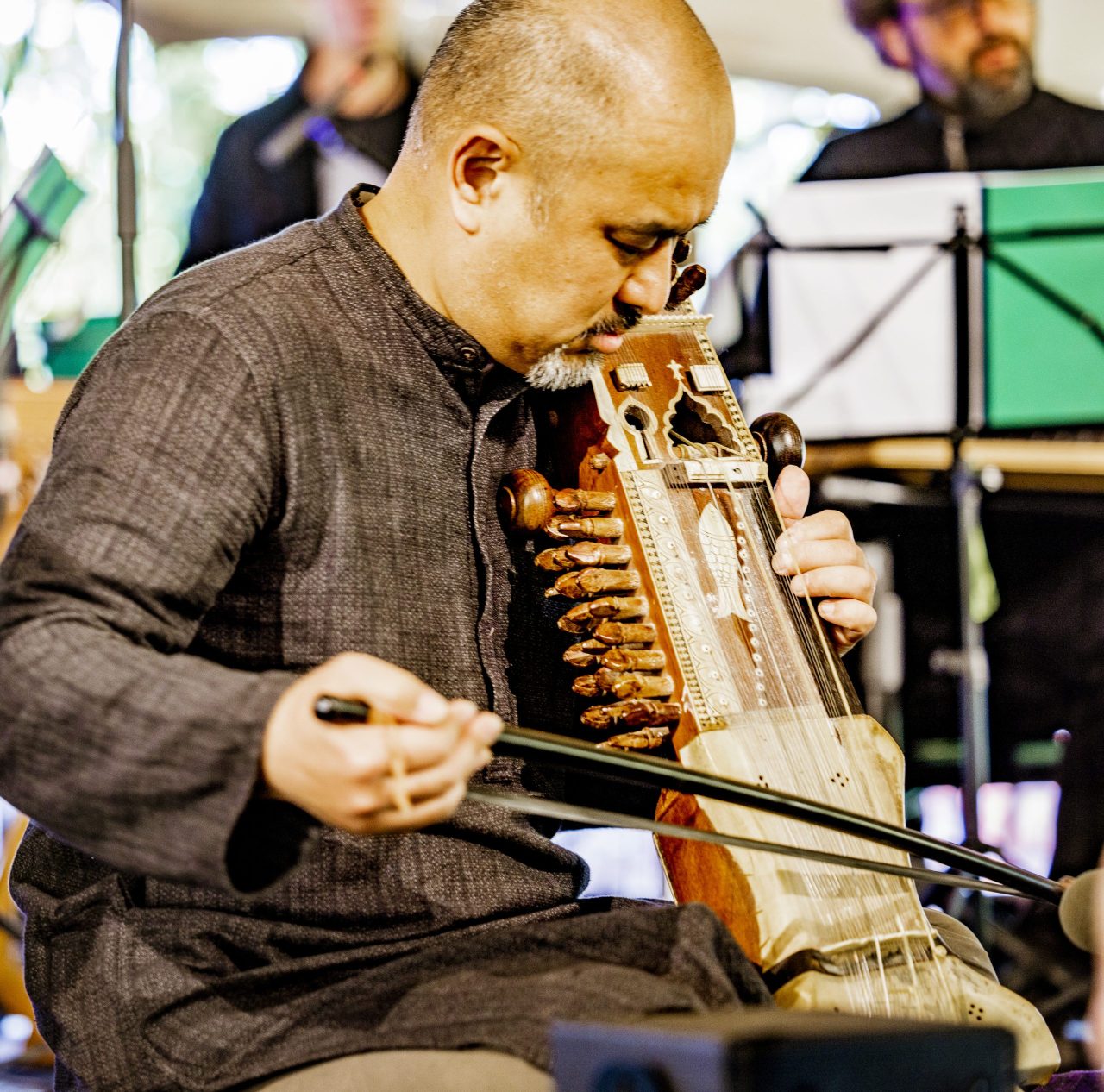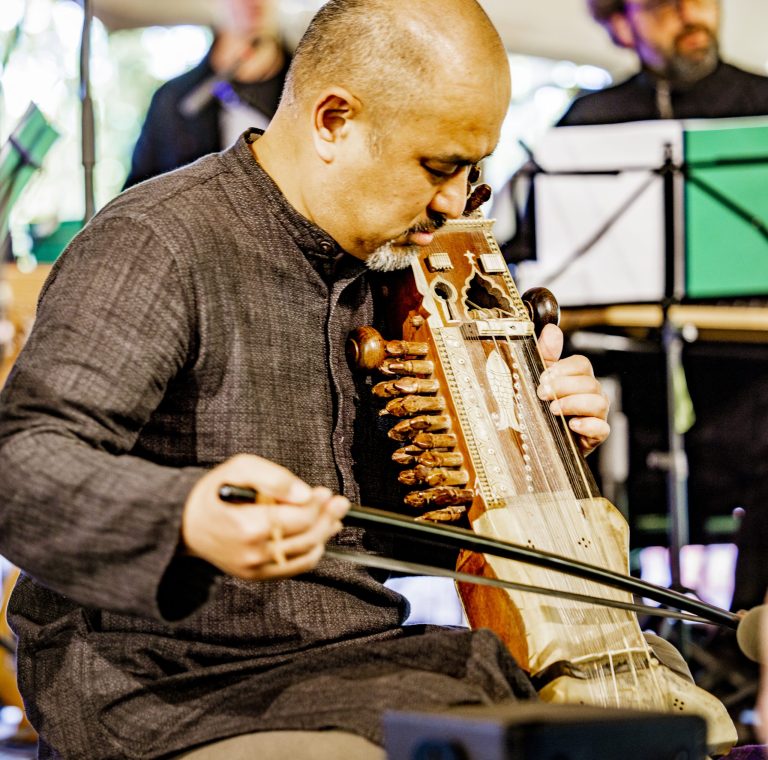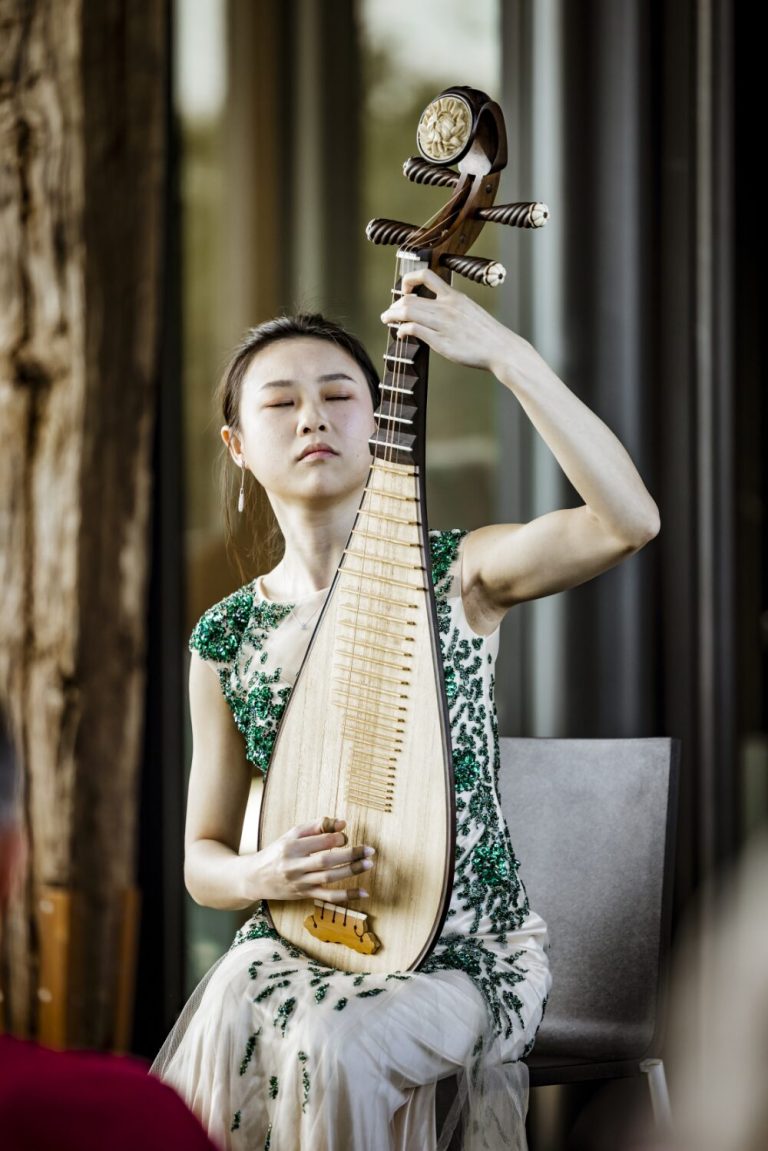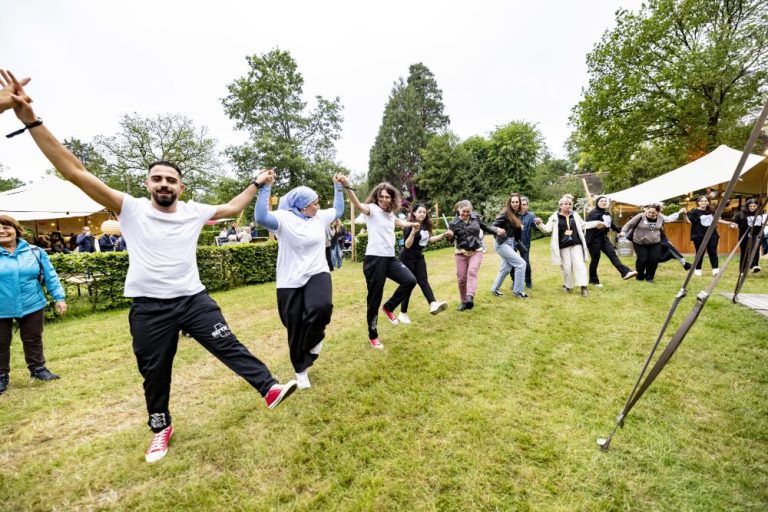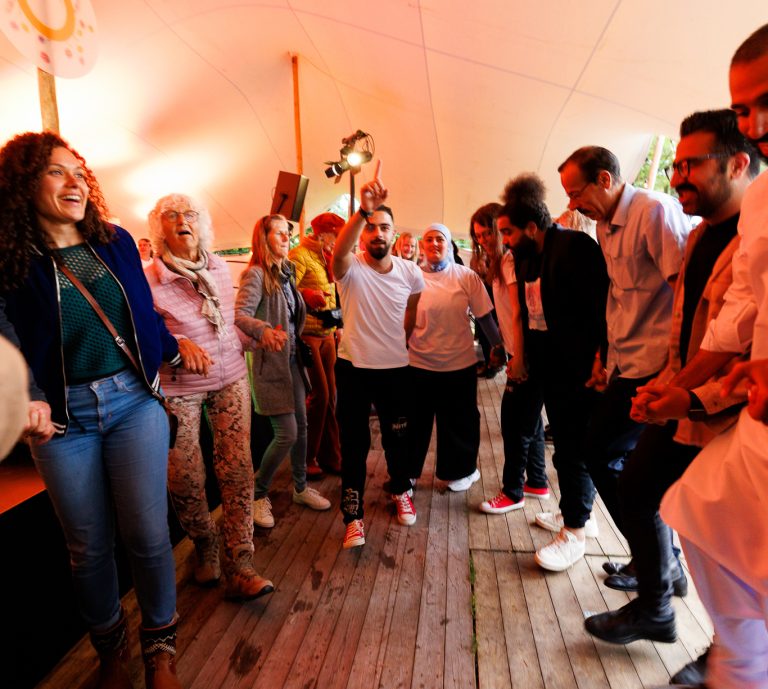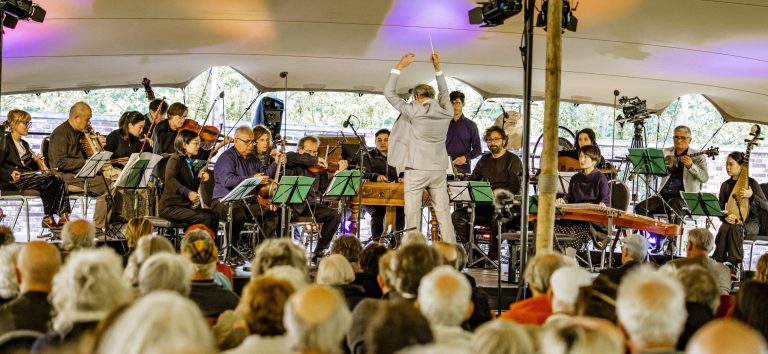Performers
- Yuji Nakagawa, sarangi
- Binnaz Çelik, kemençe More about www.idtmt.org/binnazcelik.asp
Read more about the instrument
The kemençe is a small string instrument from Turkey widely used in Anatolia and the Black Sea region. The shape and name of the kemençe changed in many regions until it reached its final form in Anatolia. Until the late 19th century, the instrument was used in Rumeli Folk music called kaba saz. In kaba saz, it is accompanied by lavta and percussion. Toward the end of the 19th century, the kemençe became popular and was used in ince saz, which is Turkish art music. The kemençe has three strings and a pear-shaped body made of mulberry, plum and juniper wood. The wooden part of the bow is generally rosewood or boxwood. The instrument has a neck without a fingerboard. The strings are stopped sideways by pressure from the fingernails. The kemençe is held vertically and rests on the player's knee. The tuning is: d (neva), g (rast), d (yegah).
Popularly known as "the instrument of a hundred colors, tunings or tones" (from sau rangi), the sarangi was probably brought to India from Afghanistan. This shorthanded string lute owes its rich and vocal tone to the resonance of sympathetic strings. It is the main string instrument in North Indian or Hindustani concert music, and is played both solo and to accompany vocal music. Although it has been used for centuries primarily to accompany singers (to accompany the singer's improvisations), thanks to the efforts of several musicians, the sarangi now enjoys the status of a classical solo instrument. The sound box is carved from a single block of wood, covered with skin and held vertically and placed in a lap. Three or four main strings of gut are bowed with a heavy horsehair bow and "stopped" with the cuticles of the middle three fingers of the left hand, allowing for a wide range of ornamentation and virtuosity. Twenty to forty resonant steel strings (tarabs) run under the main strings and are divided into four different "choirs. This creates the deep and sonorous voice characteristic of the instrument.
